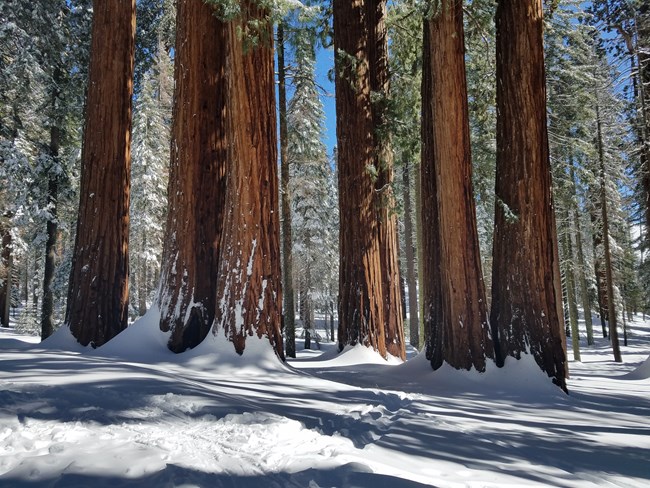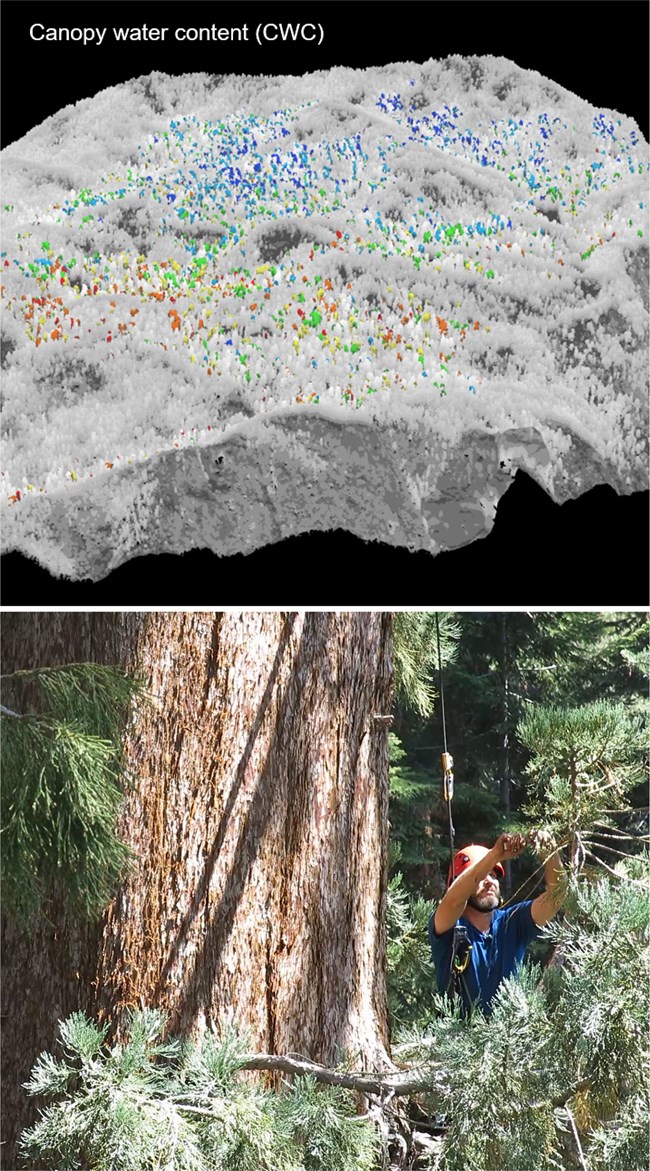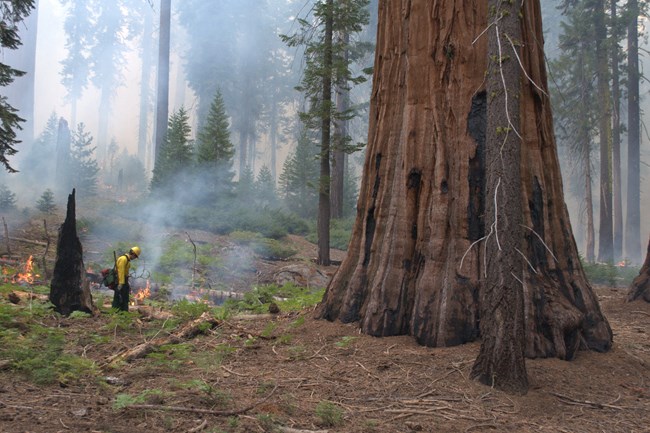
Within our human time scales, giant sequoias appear to withstand many challenges, including variations in climate, fires, air pollutants, and disease. However, research suggests that past climate-driven shifts caused sequoia declines, reducing the area where they could grow. They were rare during a warm period about 10,000 to 6,000 years ago. Their present level of abundance in the Sierra Nevada dates back only about 4500 years! Today, giant sequoias face new challenges from warming temperatures and resulting hotter droughts. 
USGS / Nate Stephenson Hotter Drought and Giant SequoiasDuring California’s 2012–2016 hotter drought – the most extreme in the instrumental record and perhaps in the last several centuries – local scientists and park managers observed widespread giant sequoia foliage dieback, most pronounced during 2014. They also documented 33 sequoias that died standing in the years during and following the drought, associated with native bark beetle activity and fire-related damage around the bases of trees.Apparent beetle kill in giant sequoias is a newly reported phenomenon, associated with hotter drought. While the Phloeosinus bark beetles have been noted in dead fallen branches of giant sequoias, they were not identified as an apparent cause of death until recently. Dead trees associated with beetles usually also had recent severe basal fire scarring. Most of these trees also grew in moist locations (meadow edges or moist draws). These trees may have been more adapted to moist conditions, making them more vulnerable when the severe drought reduced soil moisture availability. Learning more about hotter droughts and their impacts on giant sequoias is critical to help park managers prepare for the future. 
Upper image courtesy of Greg Asner, Center for Global Discovery and Conservation Science, Arizona State University; lower image courtesy of Wendy Baxter, Dept of Science, Policy, and Management, University of California, Berkeley Understanding ChangeScientists are gathering information to better understand responses of giant sequoia to drought and to characterize landscape-scale spatial patterns of vulnerability to hotter drought. Their Leaf to Landscape project collects and evaluates information at three spatial scales –
Brief Summary of ResultsGiant sequoias showed leaf- and canopy-level responses that were effective in sustaining water availability within the tree for the vast majority of individual sequoias. Very few giant sequoias died during the drought compared with other mixed conifer tree species. But the level of sequoia drought response varied across the landscape. Local site characteristics related to water balance at least partially explained tree sensitivity to drought. For example, lower elevations, steeper slopes, and grove edges are site characteristics associated with lower water availability. The researchers found that low canopy water content is an indicator of recent foliage dieback (when stress levels are so high that adjustments made by the tree to conserve water are insufficient to maintain water availability in the tree). Future efforts will measure recovery from drought and strengthen capability to interpret maps of drought vulnerability. 
NPS / Anthony Caprio Responding to ChangeManagers may be able to enhance tree survival in the face of future hotter droughts. For example, reducing forest density by prescribed burning or mechanical thinning can reduce competition for water among the remaining trees. But there are many sequoia groves over a large area, and prioritization will be needed, deciding where on the landscape limited efforts will be best applied. Mapping vulnerability of giant sequoia groves to severe drought and warming temperatures will help managers more strategically target treatments. Learn More: New Threats to Giant Sequoias |
Last updated: June 28, 2021
